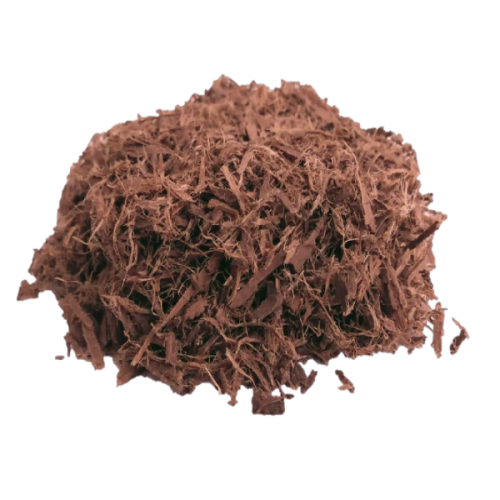Mimosa Hostilis Root Bark retains a significant place in common practices and modern botanical purposes. This post explores the properties, origins, and common concerns surrounding this exceptional plant material, with a particular center on the prized Brazillian Mimosa Hostilis Root Barks.
What on earth is Mimosa Hostilis Root Bark?
Mimosa Hostilis, scientifically known as Mimosa tenuiflora, is often a perennial tree indigenous on the northeastern area of Brazil and areas of Mexico. The foundation bark of this tree has been used for centuries by indigenous communities for various useful and traditional uses. The interior root bark is made up of noteworthy concentrations of tannins, alkaloids, along with other phytochemicals that contribute to its distinct properties and apps.
The tree alone is remarkably resilient, able to surviving in weak soils and drought circumstances. This hardiness contributes on the strong nature with the bark and its chemical profile. When harvested sustainably, the outer root bark is carefully divided to access the precious internal bark, and that is then dried and prepared for use.
Brazilian Mimosa Hostilis Root Bark: The Gold Common
When talking about top quality in Mimosa Hostilis merchandise, the Brazillian Mimosa Hostilis Root Barks are normally thought of outstanding during the botanical industry. A number of variables contribute to this track record:
Exceptional Growing Conditions
The precise soil composition, local weather, and ecosystem of Brazil's northeastern region produce great circumstances for Mimosa tenuiflora to acquire its total chemical possible. The mineral-prosperous soils and distinct sample of rainfall and daylight in this location surface to improve the focus of active compounds in the basis bark.Standard Harvesting Understanding
In areas the place Mimosa Hostilis has become utilized usually, harvesters have produced advanced solutions for sustainable harvesting that preserves both the tree and also the potency of the bark. This know-how, passed down by way of generations, makes sure that the bark is collected at the best time of year and processed using approaches that manage its integrity.Distinctive Actual physical Traits
Brazilian Mimosa Hostilis Root Bark usually shows a wealthy reddish-brown to purple internal bark with a fibrous, dense texture. The visual properties normally function an Preliminary indicator of top quality, with knowledgeable end users recognizing the exclusive visual appeal of bark from this region.
Typical Programs and Takes advantage of
The apps of Mimosa Hostilis Root Bark span equally common and modern day contexts, although It truly is crucial to comprehend the lawful status of those makes use of may differ Brazillian Mimosa Hostilis Root Barks by place and jurisdiction.
Traditional Craft and Apply
Indigenous communities have historically employed Mimosa Hostilis Root Bark for developing all-natural dyes for textiles, While using the bark creating lovely shades of purple, burgundy, and deep brown. The tannin-wealthy Houses also built it important for leather tanning and other realistic purposes.Modern Botanical Exploration
Modern fascination in Mimosa Hostilis Root Bark extends to numerous fields of botanical investigation, specially finding out its chemical composition and prospective programs. Scientists have identified several exciting compounds in the bark that warrant further scientific investigation.Horticultural and Agricultural Employs
In permaculture and sustainable agriculture, Mimosa tenuiflora is valued as being a nitrogen-fixing species that will boost soil high-quality. The bark alone, when processed, may be used for a organic mulch or soil Modification in particular agricultural contexts.Good quality Evaluation and Identification

For the people dealing with Mimosa Hostilis Root Bark, knowledge the way to evaluate good quality is crucial. Significant-quality material, notably authentic Brazillian Mimosa Hostilis Root Barks, normally displays particular traits:
The Visible visual appearance really should present a clear distinction between the outer and interior bark, Together with the internal bark displaying deep, vibrant shades. The material must have a attribute earthy, a little bit sweet aroma, cost-free from musty or moldy notes. When processed, the bark must produce a wonderful powder though maintaining its fibrous framework until eventually grinding. Appropriately dried bark really should be brittle although not dusty, indicating accurate dampness content.
Routinely Asked Inquiries (FAQs)
one. Exactly what is the difference between Mimosa Hostilis Root Bark from Brazil as well as other regions?
Brazilian Mimosa Hostilis Root Bark is mostly viewed as excellent a result of the ideal expanding situations in northeastern Brazil, which cause increased concentrations of Lively compounds. The normal harvesting approaches used in this region also add to the general good quality and potency of the final product.2. How need to I retail outlet Mimosa Hostilis Root Bark to take care of its high-quality?
Shop the bark in a neat, dim, and dry position within an airtight container. Security from mild, moisture, and Intense temperature fluctuations should help preserve the bark's chemical integrity and forestall degradation of its Lively factors.3. Is Mimosa Hostilis an endangered species?
No, Mimosa tenuiflora is not currently stated being an endangered species. Actually, it's recognized for its resilient expansion and talent to thrive in complicated situations. Even so, responsible harvesting methods are still necessary to make sure the sustainability of wild populations.four. Am i able to increase Mimosa Hostilis outside of its native habitat?
Though Mimosa tenuiflora thrives finest in its indigenous tropical climate, it could be cultivated in related environments. The tree necessitates well-drained soil, a lot of sunlight, and protection from frost. On the other hand, the chemical profile of cultivated specimens may well differ from wild-harvested Brazilian content.five. Exactly what is the lawful status of Mimosa Hostilis Root Bark?
The legal standing may differ appreciably by state and jurisdiction. In some areas, the raw bark is authorized to possess, even though in Many others, particular extracts or preparations may be regulated. Generally study and comply with area legislation and restrictions in advance of attaining or using any botanical material.Understanding Mimosa Hostilis Root Bark, specially the premium Brazillian Mimosa Hostilis Root Barks, calls for appreciation of its botanical features, classic context, and ideal purposes. Regardless of whether for research, craftsmanship, or botanical examine, this outstanding plant substance carries on being a subject matter of fascination throughout numerous fields, though normally within correct legal and moral boundaries.